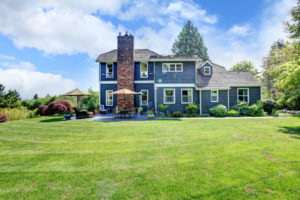
What is negative house pressure?
Your home has its own unique air pressure system; doors, windows, fans, vents, appliances, and even tiny nooks and crannies create air pressure and flow. Most homes maintain a neutral air pressure, meaning the air pressure inside the home is the same as the air pressure outside.
Negative house pressure occurs when the air pressure inside a home is less than the air pressure outside. While this might not seem like a problem, it can have a major impact on chimney and fireplace performance.
What causes a home to have negative pressure?
The air pressure in your home is a delicate balance that can be easily affected. One of the most common ways to cause negative house pressure is by having a home that is too well sealed. Caulking and weather stripping around doors, windows, and other cracks and holes keep hot and cold air out, but also negatively impact a home’s pressure.
In addition to weather stripping there are other ways to create a negative home pressure. Installing new doors or windows or making changes to a venting or HVAC system may affect a home’s pressure. Likewise, range hoods, fans, and portable heaters can all cause temporary negative pressure.
How negative pressure affects your fireplace
In a neutral air pressure home, byproducts of combustion are able to vent up the chimney while outside air is simultaneously pulled into the fireplace; this fresh oxygen is an important part of keeping a fire burning strongly without impacting your home’s air supply or quality. If a home has negative pressure, however, this natural venting is disrupted. Instead, the chimney serves as the low point of air resistance and air is forced down the chimney. This often results in smoke being pushed back into your home when the fireplace is in use.
Preventing negative house pressure
The best way to get rid of negative house pressure is by making the home less airtight, and the easiest way to do so is by opening a window near the fireplace. While this is an effective method for preventing many of the performance problems associated with negative pressure, it is not a permanent solution. If your home continues to have pressure issues, additional measures may need to be taken. Outside air vents can help provide “makeup air” in homes with negative pressure; this keeps fires burning efficiently with fewer venting problems.
Negative house pressure can cause a number of performance problems for your fireplace, but doesn’t have to be permanent. For more information on negative pressure and how to prevent it, contact New Buck Chimney Services today.
